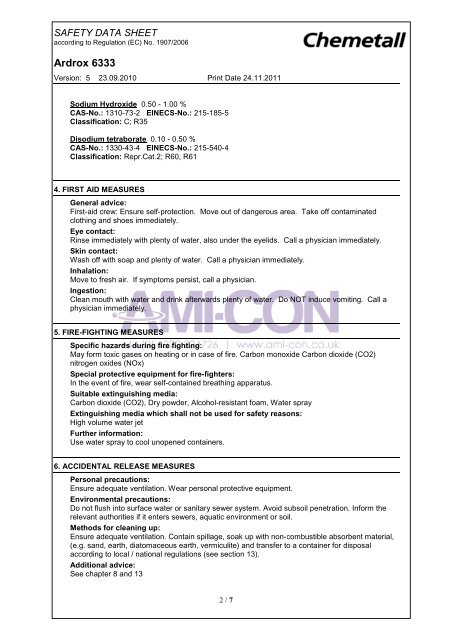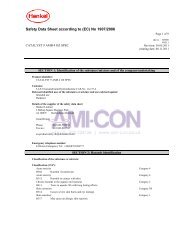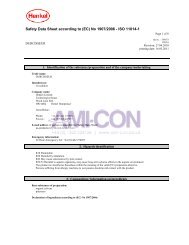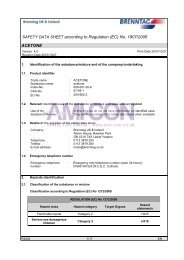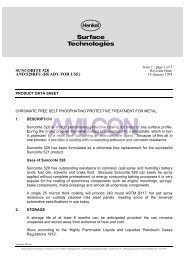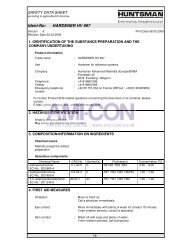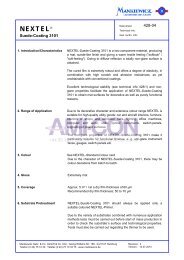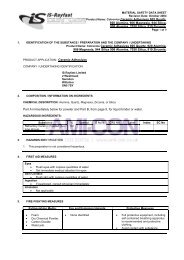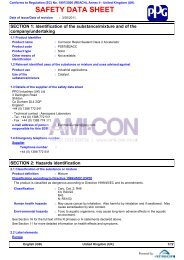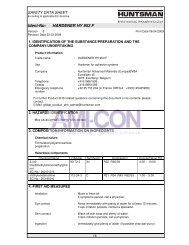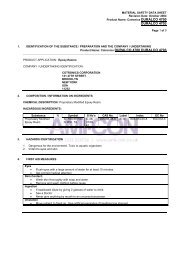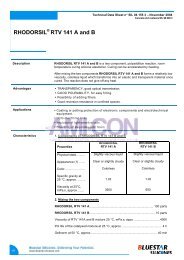Ardrox 6333 - AMI-CON
Ardrox 6333 - AMI-CON
Ardrox 6333 - AMI-CON
Create successful ePaper yourself
Turn your PDF publications into a flip-book with our unique Google optimized e-Paper software.
SAFETY DATA SHEETaccording to Regulation (EC) No. 1907/2006<strong>Ardrox</strong> <strong>6333</strong>Version: 5 23.09.2010 Print Date 24.11.2011Sodium Hydroxide 0.50 - 1.00 %CAS-No.: 1310-73-2 EINECS-No.: 215-185-5Classification: C; R35Disodium tetraborate 0.10 - 0.50 %CAS-No.: 1330-43-4 EINECS-No.: 215-540-4Classification: Repr.Cat.2; R60, R614. FIRST AID MEASURESGeneral advice:First-aid crew: Ensure self-protection. Move out of dangerous area. Take off contaminatedclothing and shoes immediately.Eye contact:Rinse immediately with plenty of water, also under the eyelids. Call a physician immediately.Skin contact:Wash off with soap and plenty of water. Call a physician immediately.Inhalation:Move to fresh air. If symptoms persist, call a physician.Ingestion:Clean mouth with water and drink afterwards plenty of water. Do NOT induce vomiting. Call aphysician immediately.5. FIRE-FIGHTING MEASURESSpecific hazards during fire fighting:May form toxic gases on heating or in case of fire. Carbon monoxide Carbon dioxide (CO2)nitrogen oxides (NOx)Special protective equipment for fire-fighters:In the event of fire, wear self-contained breathing apparatus.Suitable extinguishing media:Carbon dioxide (CO2), Dry powder, Alcohol-resistant foam, Water sprayExtinguishing media which shall not be used for safety reasons:High volume water jetFurther information:Use water spray to cool unopened containers.6. ACCIDENTAL RELEASE MEASURESPersonal precautions:Ensure adequate ventilation. Wear personal protective equipment.Environmental precautions:Do not flush into surface water or sanitary sewer system. Avoid subsoil penetration. Inform therelevant authorities if it enters sewers, aquatic environment or soil.Methods for cleaning up:Ensure adequate ventilation. Contain spillage, soak up with non-combustible absorbent material,(e.g. sand, earth, diatomaceous earth, vermiculite) and transfer to a container for disposalaccording to local / national regulations (see section 13).Additional advice:See chapter 8 and 132 / 7


